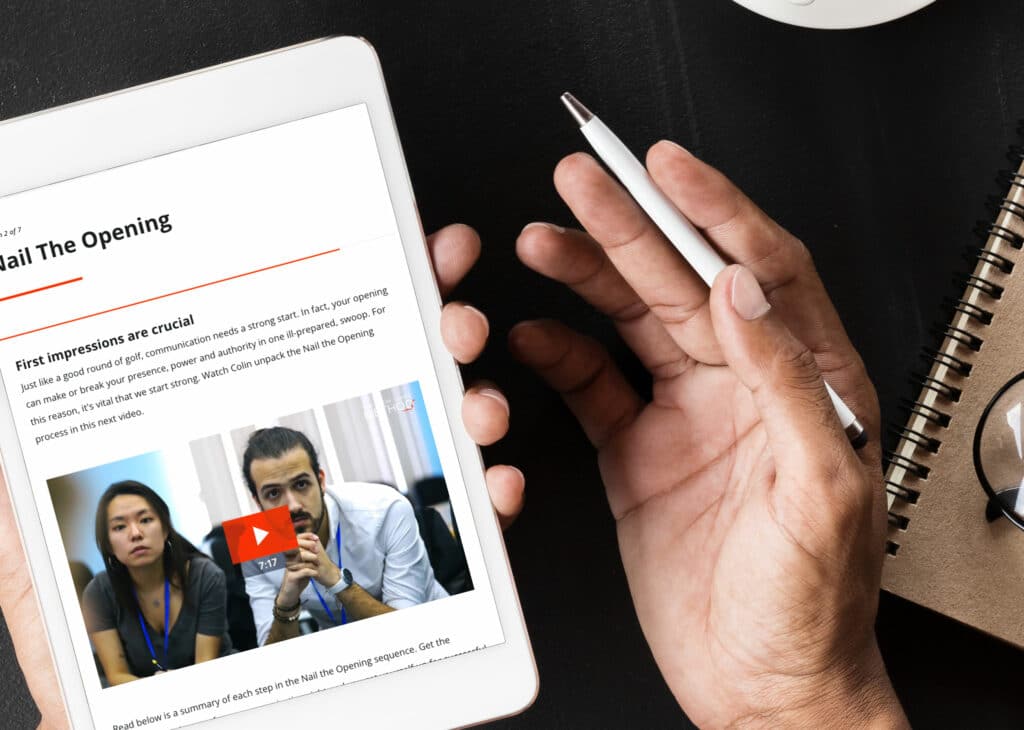Listen to the full podcast here.
We’ve worked with hundreds of organisations, and the pattern repeats itself.
L&D teams invest thousands in platforms and content. Three months later, engagement sits at 30%. The LMS becomes a digital graveyard. The employee onboarding process falls flat. Sound familiar?
Key Takeaways:
- Employee engagement with training and onboarding averages only 30%, with remote teams facing even lower rates
- Effective onboarding that includes personalised content increases completion rates by 65% versus generic modules
- Microlearning combined with social learning boosts onboarding program engagement from 30% to 80% in six months
- Measuring behaviour change, not completions, determines real training ROI and employee retention
- Manager involvement in the onboarding process doubles or triples training engagement rates
Introduction to Employee Onboarding
Training and onboarding aren’t just HR checkboxes. They’re strategic investments that either build capability or drain budgets. When new hires and existing employees disengage from the employee onboarding process, your organisation loses twice. First, wasted platform spend. Second, the productivity gap from undeveloped skills.
According to LinkedIn’s 2024 Workplace Learning Report, 89% of L&D professionals say building employee skills through effective onboarding helps navigate the future of work. Yet only 36% of employees have time for learning during their workweek.
This disconnect creates massive engagement problems that impact employee retention, job satisfaction, and organisational culture.
The Importance of Onboarding in Modern Organisations
The employee onboarding experience sets the foundation for long-term success. A formal onboarding program that extends beyond the first week creates lasting impacts on productivity, employee retention, and company culture.
Research shows organisations with effective onboarding programs improve new hire retention by 82% and productivity by over 70%. Yet most companies still treat onboarding as a one-day orientation rather than a comprehensive process.
Why Traditional Employee Onboarding Fails
Most employee onboarding programs fail before they launch. They’re built on outdated assumptions about how adults learn and how modern work functions.
The LMS Fatigue Problem
Employees are tired of clunky platforms. When your training software requires five clicks to access a three-minute video, you’ve lost half your audience before they start.
The average employee uses 36 cloud-based services at work, according to BetterCloud research. Another platform for job training creates friction. If the onboarding process isn’t embedded in workflows, it becomes an afterthought.
The Content Relevance Gap in Onboarding
Generic content kills engagement in the employee onboarding process. We worked with a financial services firm that rolled out identical leadership training to branch managers, customer service reps, and risk analysts.
Completion rates? 22%. New hires couldn’t see how the information applied to their specific roles and responsibilities.
Deloitte research shows 80% of executives rate employee experience as important. Yet only 22% report excellence at building differentiated experiences. Irrelevant content destroys the employee onboarding experience.
Remote and Hybrid Challenges for New Hires
Hybrid work exposed every weakness in traditional employee onboarding. Casual learning through observation disappeared overnight. Team introductions became awkward video calls. New hires struggled to understand the company culture remotely.
Gartner research shows 48% of employees work remotely at least part-time. Your onboarding process must work for distributed teams and support functional collaboration across locations.
Company Culture Integration in Onboarding
Understanding and integrating into company culture is one of the most critical yet often overlooked aspects of the employee onboarding process. New hires need more than policies and procedures. They need to understand the values, behaviours, and unwritten rules that define your organisation.
Building Company Culture Awareness
Effective employee onboarding programs dedicate significant time to company culture immersion. This includes storytelling sessions about the organisation’s history, values workshops, and opportunities to observe culture in action through team collaboration.
Compliance and Legal Requirements in Onboarding
Compliance training is a non-negotiable component of the employee onboarding process. New hires must understand legal requirements, safety protocols, and regulatory standards from day one. However, compliance doesn’t have to be boring.
Making Compliance Training Engaging
Transform compliance from a checkbox to an engaging part of the effective employee onboarding process. Use scenario-based learning, interactive modules, and real-world examples that show why these legal requirements matter. One healthcare organisation reduced compliance training time by 40% while improving comprehension by using microlearning and gamification in their employee training program.
Adult learners in the onboarding process need three things:
- Relevance to their actual work and job description
- Achievable goals that don’t overwhelm new hires
- Social proof that key stakeholders value the learning
Most onboarding programs fail on all three.
The 5 Cs of Onboarding: A Framework for Success
The 5 cs of onboarding provide a framework for effective employee onboarding programs. These five critical elements are compliance, clarification, culture, connection, and check-back. Understanding the cs of onboarding helps organisations build comprehensive employee training programs that cover all essential aspects of the onboarding experience.
The Motivation Equation for New Hires
Content feels theoretical during initial onboarding. Modules take 45 minutes when employees have 10-minute attention spans. There’s no visible commitment from peers or leaders about the importance of onboarding.
We’ve tested rewards versus intrinsic motivation in employee onboarding programs. The data is clear. Badges create short-term spikes. Intrinsic motivation tied to job satisfaction creates lasting change.
One manufacturing client shifted their onboarding process from completion-based incentives to competency-based progression. The goal became “demonstrate this technical skill” instead of “finish five training courses.”
Engagement in their employee onboarding program jumped from 34% to 71% in four months.
The Forgetting Curve in Job Training
Without reinforcement, learners forget 70% of new information within 24 hours. Traditional onboarding dumps content in one session and wonders why nothing sticks.
Research in the Journal of Applied Psychology shows that cognitive load directly impacts learning outcomes. Stressed, overloaded new hires can’t retain information during the employee onboarding process.
Productivity Gains Through Effective Onboarding
Time-to-productivity is a critical metric for measuring the success of your employee onboarding program. Organisations with effective employee onboarding processes see new hires reach full productivity 30 to 50% faster than those with poor onboarding.
Accelerating Productivity in New Hires
The key to faster productivity gains is structured learning combined with hands-on application. New hires need clear expectations, regular feedback, and opportunities to apply skills immediately. One technology company reduced time-to-first-contribution from 90 days to 45 days by restructuring its employee training around real projects during the onboarding process.
Completion doesn’t equal engagement. We’ve seen 90% completion rates with zero behaviour change in onboarding programs.
Real engagement metrics for effective employee onboarding include:
- Time on task during training sessions
- Interaction patterns with onboarding materials
- Peer discussions about roles and responsibilities
- Manager conversations about the onboarding experience
- Observable skill application and productivity gains
If you’re only tracking completions in your employee onboarding program, you’re flying blind.
Recruiting and Onboarding Alignment
The connection between recruiting and the employee onboarding process is often overlooked. Information gathered during recruiting should inform the onboarding experience. Share candidate expectations, skills assessments, and cultural fit observations with the onboarding team. This ensures the training process builds on what recruiting has already established, creating a seamless transition from candidate to productive employee.
Start with participation rates. How many new hires start modules within the first week? How often do they return to the onboarding process? What’s the average session length?
Layer in quality indicators for your employee onboarding experience. Are learners engaging with supplementary information? Asking questions during training courses? Sharing insights about company culture? Are managers noticing skill application and increased productivity?
These signals tell you whether your formal onboarding works.
Proven Practices and Tips for Effective Onboarding
Here are the onboarding practices we’ve used to transform engagement from disappointing to exceptional.
Microlearning in the Onboarding Process
The sweet spot for effective onboarding is 3 to 7 minutes for video content, 5 to 10 minutes for interactive modules in your employee onboarding program.
A healthcare organisation broke their 90-minute compliance training into twelve focused modules. Each covered one protocol with a real scenario for new hires.
Completion rates went from 45% to 89%. Protocol adherence improved by 34% in the following quarter. The employee onboarding experience has transformed.
Design principles for effective employee onboarding:
- One clear objective per training session
- Hook new hires in the first 15 seconds
- Deliver core information
- End with immediate action tied to their job description
Gamification in Employee Onboarding Programs
Gamification works in the onboarding process when it reinforces desired behaviours. It fails when it’s superficial point-scoring.
We helped a technology company redesign their employee onboarding program using team challenges. Teams earned points for applying technical skills in real tasks, not just completing onboarding courses.
Engagement climbed from 38% to 82%. Deal velocity improved by 26%. The effectiveness of their formal onboarding increased dramatically.
Elements that drive engagement in onboarding:
- Progress visualisation through the onboarding checklist
- Team-based challenges for new hires
- Public recognition for skill application
- Social accountability in the employee onboarding process
Social Learning for New Hires
Humans learn best from other humans. Remote work didn’t eliminate social learning in the onboarding experience. It moved it online.
One financial services client launched “learning circles” of 6 to 8 employees who met virtually every two weeks during their employee onboarding process. They discussed content, shared examples, and problem-solved together.
Engagement in these circles reached 94%, compared to 41% for solo learners going through traditional onboarding.
Learn more about building effective learning communities with The Colin James Method.
Manager Involvement in the Onboarding Process
When managers actively support the employee onboarding experience, engagement doubles or triples. Managers are critical to successful onboarding.
Give them specific guidance and practices:
- Start team meetings with two-minute learning shares about company culture
- Schedule 15-minute quarterly check-ins on development goals with new hires
- Learn alongside their teams during onboarding programs
- Recognise visible skill application and productivity improvements
When leaders take the same training courses and share their employee onboarding experience, it transforms perception.
Preboarding: The Critical First Step
The differences between onboarding and preboarding matter. Preboarding happens before the first day. It sets expectations, builds excitement, and starts the employee onboarding process early.
Best Practices for Preboarding New Hires
Send welcome packages with company culture information. Provide access to key resources and the onboarding checklist. Schedule virtual coffee chats with team members. Share the organization’s values and mission.
Great onboarding starts before day one. Preboarding reduces first-day anxiety and accelerates the initial onboarding phase.
Technology Setup for the Onboarding Process
Handle IT setup during preboarding. Ensure new hires have laptop access, login credentials, and training software ready. Nothing kills momentum like technical issues on day one.
Automation tools can streamline this step of the employee onboarding process, ensuring consistent experiences for all new hires.
The Employee Onboarding Checklist
An effective onboarding checklist ensures nothing falls through the cracks during the employee onboarding process.
Week One: Introduction and Orientation
Day One Tasks:
- Welcome and team introductions
- IT setup verification
- Review job description and roles and responsibilities
- Company culture overview
- Compliance and legal requirements training
- Benefits information session
Rest of Week One:
- Department-specific training sessions
- Introduction to key stakeholders
- Shadowing experienced team members
- Initial assignments and tasks
Month One: Integration and Job Training
Continue formal onboarding with specific training courses. Focus on the technical skills needed for the role. Schedule regular check-ins with managers and human resources.
Provide guidance on organisational culture and unwritten rules. Facilitate functional collaboration across departments. Ensure new hires understand how their role connects to broader organisation goals.
Months Two to Six: Development and Mastery
Extend the employee onboarding program beyond the first month. Research shows that effective onboarding lasts at least six months.
Continue job training with advanced courses. Set clear performance expectations. Create opportunities for new hires to contribute ideas. Build relationships across the organisation.
Personalisation in the Employee Onboarding Process
Generic onboarding is dead. New hires expect content tailored to their role, experience level, and development goals.
Role-Based Onboarding Paths
Create distinct journeys for different roles in your employee onboarding program. Customer service onboarding should look nothing like product development onboarding.
A retail organisation created five distinct onboarding paths. Store associates learned customer engagement through specific training courses. Store managers learned scheduling through targeted job training. Regional directors learned strategic planning.
Same platform. Different employee onboarding experiences.
First-month engagement jumped from 52% to 88%. Time-to-productivity for new hires dropped by 40%. The effectiveness of their formal onboarding improved dramatically.
AI-Powered Support in Onboarding
AI transforms the personalised delivery of the employee onboarding process. Chatbots answer questions about benefits, company culture, and policies instantly. AI analyses engagement and predicts dropout risk in onboarding programs.
We’re testing AI chatbots that pull from entire content libraries. New hires get instant information without waiting for human resources support.
Early results show 3X higher engagement versus static FAQs in the employee onboarding experience.
Measuring Success: Onboarding Effectiveness and Benefits
The employee onboarding process exists to drive behaviour change that improves business outcomes. Most organisations measure activity, not impact.
Key Benefits of Effective Onboarding
Research shows the benefits of great onboarding include:
- 82% improvement in employee retention
- 70% increase in productivity
- 60% increase in revenue growth year-over-year
- Higher job satisfaction and engagement
- Faster time-to-competency for new hires
These benefits justify investment in formal onboarding programs.
From Activity to Outcomes in Employee Onboarding
Define clear outcomes before launching your employee onboarding program:
- What specific behaviours should new hires demonstrate?
- What performance indicators should improve?
- What business metrics should move?
Then measure whether those things happen during and after the onboarding process.
Start with organization goals. Work backwards. What employee behaviours influence those goals? What onboarding practices build those capabilities?
This ensures your employee onboarding experience connects directly to outcomes that matter.
Demonstrating ROI of Employee Onboarding Programs
Track business outcomes, not just completion of onboarding courses. Show how effective onboarding drives revenue, reduces costs, or improves quality.
One sales organisation calculated that their employee onboarding program increased average deal size by 18%. With 200 salespeople closing 40 deals yearly, that meant $4.2 million in additional revenue.
Training and onboarding costs were $150,000. That’s a 28X return.
That story gets executive attention. Not the completion rates of training sessions.
Discover how The Colin James Method helps organisations demonstrate measurable impact.
Real-World Success: Effective Onboarding Programs
Technology Company: Transforming Employee Onboarding
A software company with 5,000 employees faced 28% platform engagement in their employee onboarding process.
Their approach to effective employee onboarding:
- Created role-specific onboarding paths for 12 job families
- Integrated the onboarding process into Slack with daily five-minute moments
- Launched peer learning circles of 6 to 8 new hires
Results after six months:
- Engagement in the employee onboarding program jumped from 28% to 79%
- 64% of new hires demonstrated new capabilities
- 12X ROI from productivity improvements
- Employee retention increased by 40%
Healthcare Network: Successful Onboarding for New Hires
A healthcare network had 34% first-year turnover among new nurses. Their employee onboarding process needed a complete redesign.
Their formal onboarding redesign:
- Daily five-minute videos during the first 90 days of the onboarding experience
- Paired every new hire with experienced mentors
- Monthly cohort reunions for peer support and team introductions
- Comprehensive onboarding checklist covering compliance and technical skills
Results after one year:
- First-year employee retention improved to 81%
- New hires reached productivity 30% faster
- Patient satisfaction increased by 8 points
- Saved $2 million in reduced turnover
- The effectiveness of their employee onboarding program increased dramatically
Financial Services: Effective Onboarding Practices
A banking organisation had 31% quarterly training completion in their employee onboarding program.
Their strategy for successful onboarding:
- Gamified team challenges tied to real metrics
- Points for completing onboarding courses AND applying skills
- Manager involvement as coaches in the onboarding process
- Regular feedback on the employee onboarding experience
Results after three quarters:
- Training and onboarding engagement reached 83%
- Cross-sell rates improved by 26%
- Customer satisfaction increased by 11 points
- Generated $8.4 million in additional revenue
- New hire productivity increased 45% faster
Practical Tips: Your Step Guide to Implementation
Month One: Assess and Quick Wins in Onboarding
Pull engagement data on your current employee onboarding process. Calculate actual participation rates. Survey new hires about their onboarding experience.
Implement quick wins to improve onboarding practices:
- Clean up the platform interface and training software
- Remove outdated information from onboarding courses
- Create clearer navigation through the onboarding checklist
- Fix obvious friction points in the employee onboarding program
These small changes can boost engagement by 10 to 15% immediately.
Month Two: Pilot Your Employee Onboarding Program
Launch small pilots with one team. Test microlearning, peer circles, or gamification in the onboarding process. Keep pilots to four to six weeks.
Document everything. What onboarding practices work? What doesn’t? What surprised you about the employee onboarding experience?
Month Three: Scale Effective Onboarding
Expand successful pilots to two or three more teams. Create templates for the consistent implementation of your formal onboarding. Begin measuring outcomes beyond engagement in the employee onboarding process.
Months Four to Six: Optimise Your Onboarding Program
Focus on optimisation. Do more of what works in your employee onboarding experience. Adjust or cut disappointing elements.
Build a comprehensive measurement of business impact. Calculate ROI with real numbers from your employee onboarding program. Prepare to present results about the benefits and effectiveness to key stakeholders.
Lead with business outcomes, not completion of training courses.
Common Mistakes in Employee Onboarding
Focusing on platforms instead of strategy: Training software enables solutions. It isn’t the solution. Define your onboarding process strategy first.
Ignoring the manager’s role: Manager involvement needs to be designed into the employee onboarding program from the start. Create specific guidance and practices.
Trying to boil the ocean: Start small with your formal onboarding. Prove value. Learn. Then expand methodically across the organisation.
Measuring the wrong things: Focus on behaviour change, job satisfaction, and employee retention, not just completion of onboarding courses.
Neglecting content quality: Boring, irrelevant information in the employee onboarding experience can’t be fixed with engagement tactics. Invest in quality.
Skipping preboarding: The differences between onboarding and preboarding matter. Great onboarding starts before day one.
The Colin James Method emphasises practical, applicable learning that creates real behaviour change in employee onboarding programs.
Building Your Onboarding Support Ecosystem
Executive Sponsorship for Employee Onboarding
Secure a visible executive championship for your formal onboarding. Ask executives to participate in training sessions, share their onboarding experiences, and reinforce development messages about the importance of onboarding.
Executive attention signals priority for company culture. When the CEO mentions the employee onboarding process in town halls, engagement jumps.
Manager Enablement in Onboarding Practices
Train managers on specific topics for effective onboarding:
- How to have development conversations with new hires
- How to recognise skill application and productivity gains
- How to integrate the onboarding process into team routines
- How to reinforce company culture and organisational values
Provide scripts, guidance, and practices. Make it ongoing, not one-time training for supporting the employee onboarding experience.
Learning Champions for the Onboarding Process
Identify enthusiastic employees as learning champions for your employee onboarding program. These peer advocates promote onboarding practices and help new hires engage.
Provide early access to onboarding courses, special recognition, and community connections. Empower them as evangelists for successful onboarding.
Human Resources and the Onboarding Experience
Human resources plays a critical coordination role in the employee onboarding process. They ensure compliance requirements are met, benefits information is clear, and new hires have everything needed for success.
Regular collaboration between human resources, hiring managers, and L&D ensures the employee onboarding program runs smoothly across the organisation.
The Future of Employee Onboarding
AI-Powered Personalisation in Onboarding
AI will enable truly personalised employee onboarding experiences for every new hire. AI analyses learning patterns, skill gaps, and work context to curate perfectly relevant content in the onboarding process.
This technology will become standard within two years. You’ll deliver personalised formal onboarding at scale without proportional human resources team growth.
Skills-Based Employee Onboarding
Organisations are shifting from role-based to skills-based talent management. Build onboarding courses around discrete technical skills, not broad topics.
Deloitte research shows 93% of CEOs need better ways to understand and deploy worker skills through effective onboarding processes.
Immersive Job Training
Virtual reality and simulations move from niche to mainstream in employee onboarding programs. Practice-based learning in safe environments accelerates skill development for new hires dramatically.
PwC research found VR learners completed training sessions four times faster and felt 275% more confident applying technical skills.
Workflow Integration in the Onboarding Process
The employee onboarding experience will embed seamlessly in work tools. Your CRM suggests job training when it detects skill gaps. Your project tool surfaces onboarding information at kickoff.
Formal onboarding happens in the flow of work, not as interruptions.
Sustaining Momentum in Employee Onboarding Programs
Continuous Content Refresh
Commit to regular refresh cycles for onboarding courses. Update examples. Add new information about company culture. Remove outdated material. Keep your employee onboarding program fresh.
Create a content calendar for your formal onboarding. Solicit ideas from new hires and key stakeholders. Let demand guide the development of training courses.
Regular Communication About Onboarding
Maintain consistent communication about the employee onboarding experience and successes. Weekly newsletters. Monthly spotlights on new hires. Quarterly celebrations of successful onboarding.
Share success stories about the employee onboarding process relentlessly. Every time someone applies learning from onboarding courses to achieve results, publicise it.
Evolution Based on Feedback
Create formal and informal feedback mechanisms for your employee onboarding program. Surveys after training sessions. Focus groups quarterly. Analytics reviews monthly on onboarding practices.
When you implement changes based on feedback about the employee onboarding experience, tell people. “You asked for shorter modules in the onboarding checklist, so we broke this into five-minute chunks.”
Celebrating Achievements in Onboarding
Recognition sustains motivation through the employee onboarding process. Create milestone celebrations when new hires achieve significant progress in their formal onboarding.
Feature new hires in company communications about successful onboarding. Give leaders talking points to recognise achievements during team introductions. Create tangible symbols like certificates for completing the employee onboarding program.
Conclusion: Making Employees Love the Onboarding Experience
Transforming your employee onboarding process from 30% to 80% engagement isn’t magic. It’s the methodical application of proven onboarding practices.
Start with relevance. Make content in your employee onboarding program directly applicable to real work and job descriptions. Layer in accessibility through microlearning, mobile access, and workflow integration. Add social elements through peer discussions, team introductions, and functional collaboration.
Engage managers as champions of the onboarding process. Give them specific guidance that integrates with existing routines. Measure what matters. Track behaviour change, productivity gains, and employee retention.
Organisations that excel at employee onboarding have 30% higher innovation rates and 34% better retention, according to Gallup research. The benefits of effective onboarding extend far beyond the initial weeks.
Your new hires want to develop technical skills. They want to excel in their roles and responsibilities. They want to understand company culture. They’re just tired of formal onboarding that wastes their time with irrelevant information.
Fix that and watch engagement in your employee onboarding experience soar. Make the onboarding process valuable, and employees will show up enthusiastically. The effectiveness and importance of onboarding programs that work cannot be overstated.
Ready to transform your approach? Explore The Colin James Method’s proven training and onboarding solutions that drive real behaviour change and measurable results through effective employee onboarding.
FAQs About Employee Onboarding
What is employee onboarding, and why is it important?
Employee onboarding is the process of integrating new hires into an organisation, covering everything from compliance and benefits to company culture and job training. Effective onboarding improves employee retention by 82% and productivity by over 70%. The importance of onboarding cannot be overstated, as it sets the foundation for long-term success and job satisfaction.
How long should an effective onboarding process last?
A formal onboarding program should last at least six months, though initial onboarding typically focuses on the first 90 days. Research shows the differences between onboarding that lasts one week versus six months are dramatic. Successful onboarding programs include preboarding before day one and continue with specific training courses, guidance, and check-ins throughout the first year.
What should be included in an employee onboarding checklist?
An effective onboarding checklist should cover preboarding tasks, day-one logistics, compliance and legal requirements, benefits information, company culture introduction, roles and responsibilities clarification, team introductions, technical skills training sessions, and ongoing development through onboarding courses. Include both administrative tasks and relationship-building activities for a comprehensive employee onboarding experience.
How can I improve engagement in our employee onboarding program?
Increase engagement through microlearning formats, social learning elements like peer circles, role-based personalisation, manager involvement, and gamification. Use training software that integrates into existing workflows. Focus onboarding practices on immediate relevance to the job description. Measure effectiveness through productivity gains and employee retention, not just completion of training courses.
Learn more about modern onboarding delivery approaches.
What is the ROI of an effective employee onboarding program?
Well-designed employee onboarding programs typically deliver 10X to 30X returns through productivity improvements, reduced turnover, and increased revenue. The benefits include 82% better employee retention, 70% higher productivity, and faster time-to-competency. Calculate ROI by measuring specific business outcomes like job satisfaction, performance metrics, and retention rates, then comparing gains to the total costs of your formal onboarding.
Discover how to demonstrate onboarding impact.

















